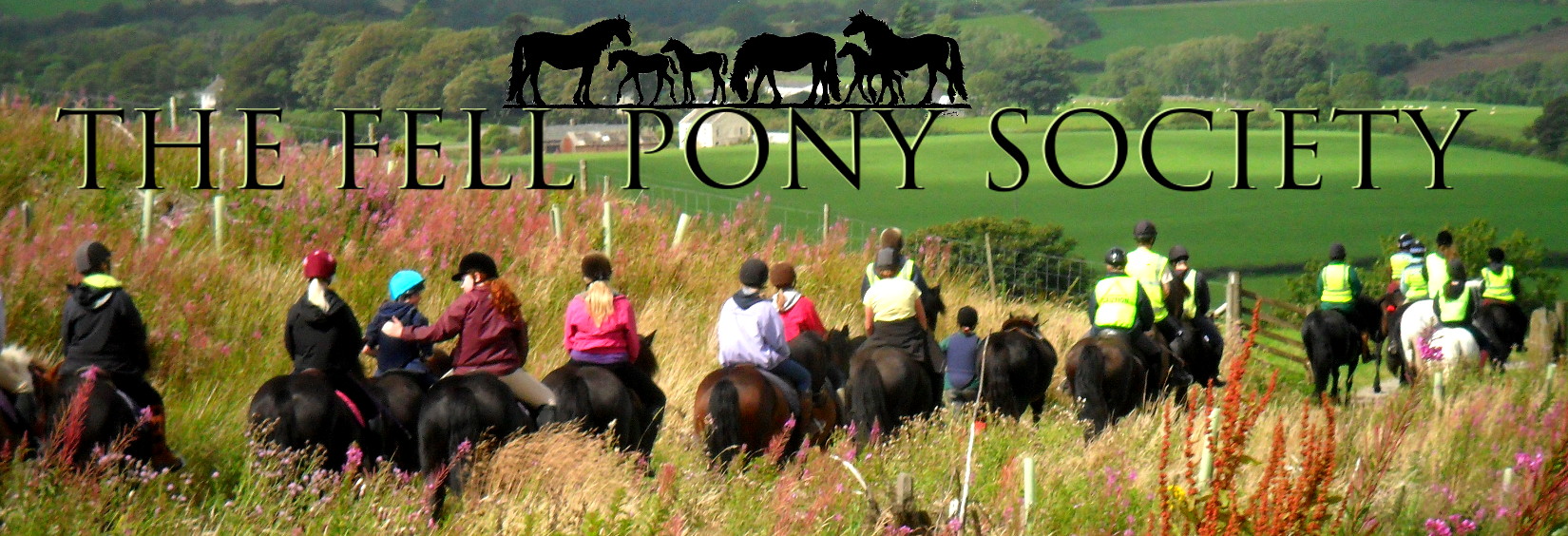Menu This site does not store any personal or financial data
The Fell Pony Society
Conservation and Grazing
The Society has a Conservation and Grazing sub-committee to promote the use of Fell ponies as native grazers of a managed landscape.
The Fell Pony is a historic part of the Cumbrian countryside and well suited to conservation grazing, being easy to manage and inclined to stay away from people even though there may be public access to the land.
CONSERVATION & GRAZING SUB-COMMITTEE 2021
Christine Robinson
Alison Bell
Rachael Brunskill-Tarn
Ian Brunskill
Sarah Charlton
Ruth Dalton
Nicola Evans
Sue Millard
Andrew Thorpe
Edwin Winder
Facebook page @FPSConservation
Useful Links
Welfare Code for Keeping Horses & Ponies (Gov.uk)
Countryside Stewardship (Gov.uk)
UK
Native Animals at Risk List (Gov.uk)
Native Breeds at Risk Supplementary Payment (SP8) (Gov.uk)
Natural England's Upland Management Handbook (2001)
Farm Animal Genetic Resources (FAnGR) (Gov.uk)
RBST Grazing Project Resources
RBST Grazing Animals Project Handbook
RBST Summary of Environmental Land Management Scheme (2024)
.
.
.
Equine Conservation Grazing Network (Facebook group)
Why You Should Be Using Native Ponies for Conservation Grazing (Wildlife & Countryside Link)
Recognising the Potential Role of Native Ponies in Conservation (Aberystwyth University)
What is the secret to success for upland regenerative grazing systems? (Wilderculture blog)
.
.
.
The Conservation and Grazing sub-committee covers the remits of breeders and grazing because both issues interlock with regard to handling and management of ponies. We want to share news, guidance and encouragement. This can come not only from hill breeders but from those who run ponies on allotment land and enclosed lowland, and those who have in-depth knowledge of the impact of ponies on the land, and the effect of the land on the ponies. We hope to work with conservation organisations and landowners to promote and publicise the use of Fell Ponies for land management.
Conservation Land Available / Ponies Available for Grazing
If you would like to know more about any of these, make contact in the first instance via Christine Robinson, christine@kerbeck-fell-ponies.co.uk, Tel: 016973 51854, Mobile: 07802 733309.
Large Acreage in SW Scotland
We have a Land Owner in South West Scotland who is offering medium to
long term grazing for a number of ponies on a very large acreage of Hill
land. Dependent on numbers offered, this may well be a good
opportunity for anyone with younger colts or geldings to have them away
until they are of an age to assess for their license or bring into work,
although mares/fillies would be considered if no colts are
offered. Owners would be asked to attend an onsite meeting with
the Land Manager to be able to see the offered land and ask any
questions regarding management of the ponies.
Please contact Christine Robinson, christine@kerbeck-fell-ponies.co.uk,
Tel: 016973 51854, Mobile: 07802 733309 to express your interest.
2 Acres of Grazing at Eskdale Green, Cumbria, Sept 2024
Taken up, October 2024.
North East, 27 May 2024
We have a lady looking to loan out a three year old filly, long term, if anyone knows of any potential Conservation sites that may be looking. Ideally North East, but other areas considered.
Lancashire, 9 May 2024
A lady has been in touch and has two ponies, one Fell and one Fell cross, potentially available for conservation grazing. She is located near Bolton, Lancashire.
News from RSPB, June 2023
An endangered butterfly species, the marsh fritillary, is thriving again after Fell ponies and Highland and Belted Galloway cattle replaced grazing sheep at Haweswater.
Reported in the Guardian on 26 June 2023: https://www.theguardian.com/environment/2023/jun/26/endangered-marsh-fritillary-butterfly-comeback-lake-district
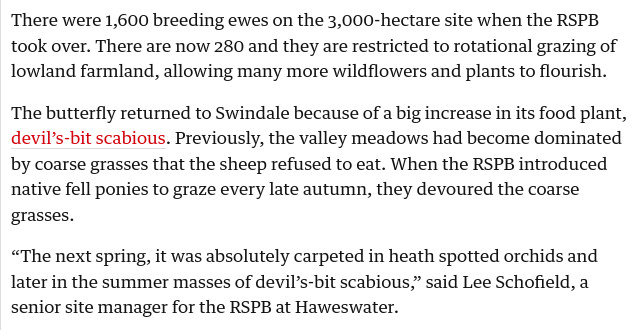
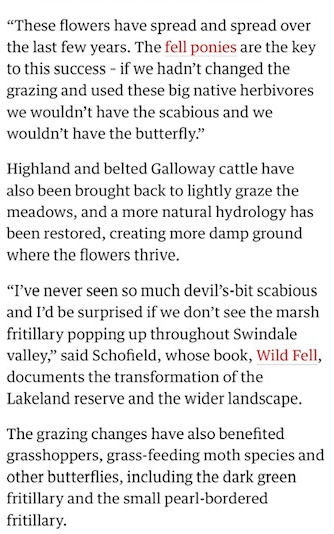
News from RSPB, December 2022
We are delighted to have received a press release from the Royal Society for the Protection of Birds informing us that ponies of our local breed have been chosen to carry out conservation grazing on their land at Haweswater.
To find out more about the vision for landscape restoration and regenerative farming at Haweswater visit wildhaweswater.co.uk
New Cumbrian ‘neigh’bours join the team at Haweswater
A small herd of four new Fell ponies has joined the RSPB team at
Haweswater, as part of their conservation grazing and regenerative
farming operation in the Eastern Lake District.
The four ponies named Gus, Tommy, Dan and Stanley have been purchased
from nearby, well-known Cumbrian Fell pony breeders - Drybarrows Fell
Ponies and Askham Gate Fell Ponies. They have been chosen as they are a
breed native to the Cumbrian fells and are very hardy to the upland
weather and terrain.
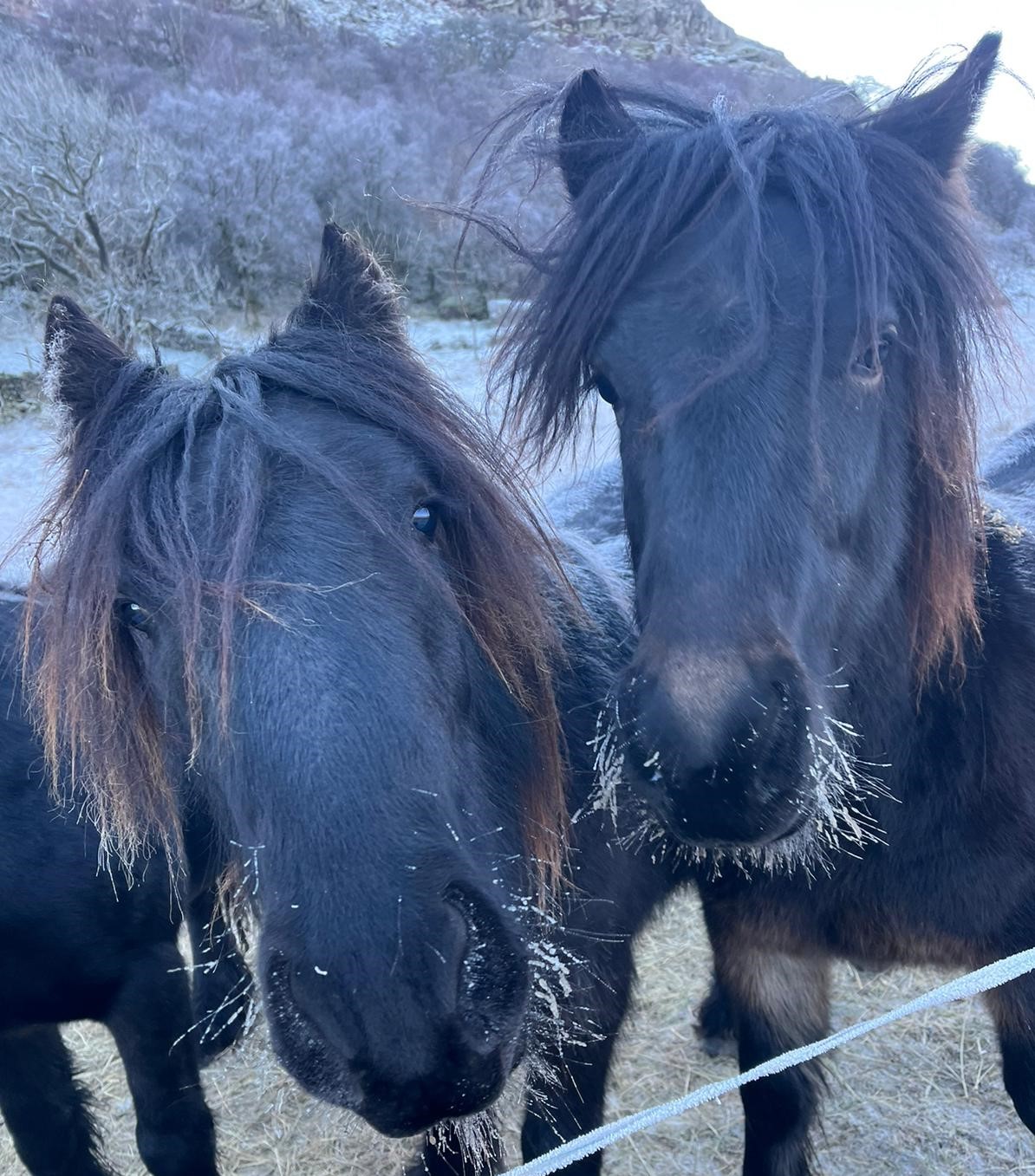
Faith Garvey, the RSPB Livestock Assistant who looks after the ponies
(and took the above photograph), said: “We’re so excited to have these
ponies join our team. Along with our mixed herd of 35 Belted Galloway
and Highland cattle, and our 300 Cheviot sheep, the ponies are part of
our conservation grazing and regenerative farming operation at
Haweswater. They will be used to help graze the more dominant, coarse
vegetation such as rushes, and allow through delicate, less-competitive
plants like devil’s bit scabious, which is the food plant for the rare
marsh fritillary butterfly, an insect we hope will colonise the meadows
here in the coming years.”
The ponies and cattle help restore the landscape around Haweswater. When
grazed in low numbers, these heavy-footed animals are emulating the wild
cattle and horses that would have once roamed this country. They trample
bracken allowing trees to grow through and they help to disperse seeds.
These animals also create areas of bare ground which allows wildflowers
to grow through and insects feed on their dung, which in turn provide
food for birds and mammals.
At Haweswater, the RSPB and United Utilities who own the site, are
working in partnership, as much of the work to restore the uplands for
wildlife and people, also benefits drinking water quality. Together,
they have planted thousands of trees, alongside other important habitat
work, such as putting the bends back into Swindale Beck and blanket bog
restoration. Conservation grazing is an important element of this work.
All of these measures lead to increased carbon storage, reduce the risk
of downstream flooding by slowing the flow of water off the fells,
naturally purify the water for drinking, benefit a wide range of special
wildlife and enhance the natural landscape for visitors.
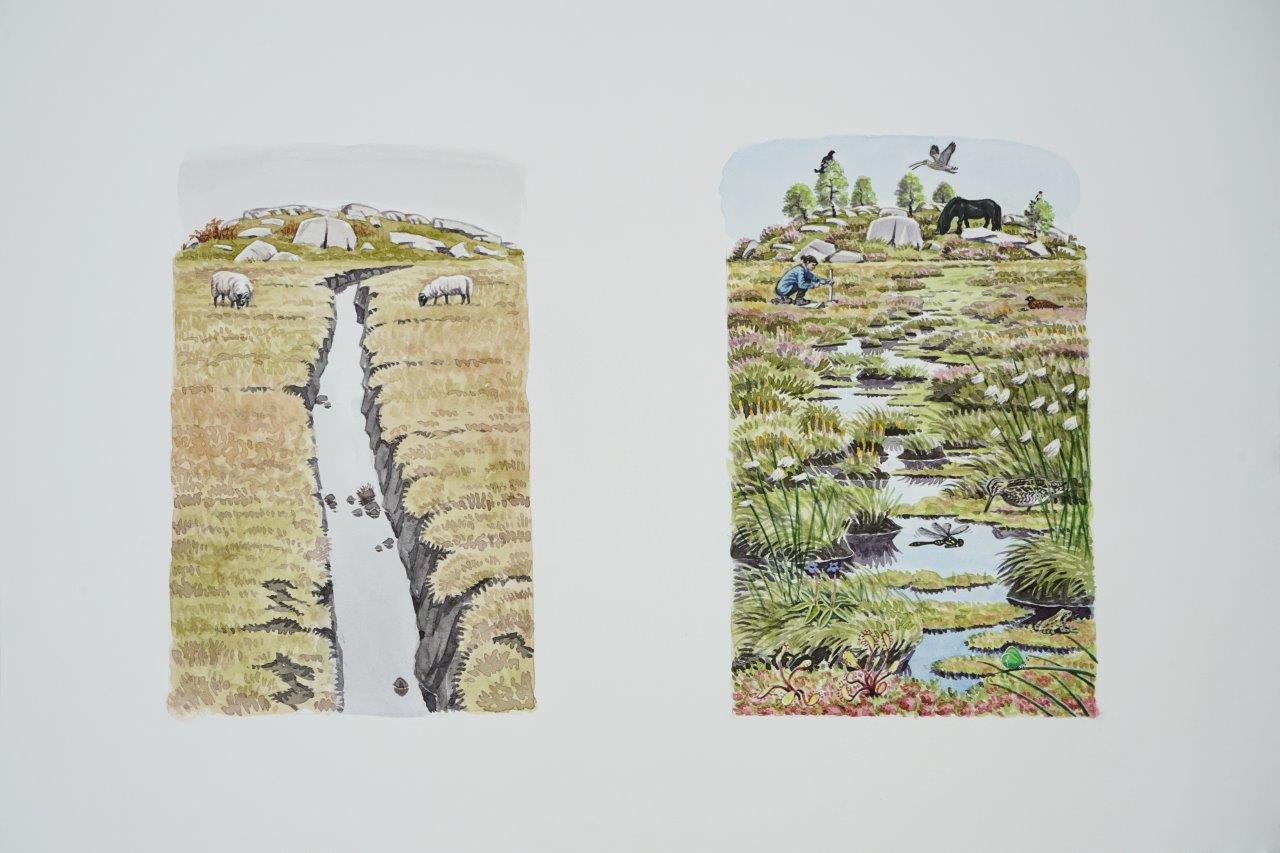
Above, a visualisation of the change in bog habitat from a drained bog
that isn’t functioning ecologically (left), to a re-wetted bog (right),
that helps lock up carbon, improve drinking water quality, reduce
downstream flooding and provide a home to wildlife, helped by mild
grazing from Fell ponies as pictured. Illustration by Richard Allen.
To find out more about the vision for landscape restoration and
regenerative farming at Haweswater visit wildhaweswater.co.uk
A video of the vision for Haweswater, including the role that the Fell
ponies will play, is available here: https://bit.ly/HWRVision
For further information and to arrange an interview, please contact:
Annabel Rushton, RSPB Visitor Experience Manager at Haweswater annabel.rushton@rspb.org.uk / 01931 713376 or Kay Hyde, RSPB England Communications Officer at EngMediaEnquiries@rspb.org.uk
17 December 2022
Breeders Survey
The Society's Conservation and Grazing Sub-Committee is still seeking breeders' observations and experience re the grazing where you run your ponies.
If you are a breeder, please follow this link to the Survey - https://forms.gle/via4boqzoTwWGfFd6 or contact Christine Robinson (christine@kerbeck-fell-ponies.co.uk) or Sue Millard (sue@dawbank.co.uk) Printed copies of the Survey are available.
We are asking all breeders to complete the survey - whether on the hill, on allotment / fell ground / intake, or on lowland grazing.
Responses to this survey will be collated to provide the Fell Pony
Society with evidence about:
• the number of breeders who use common land and allotment/fell ground
• the number of rights on fell commons
• pony numbers on the fell commons and on enclosed allotment / intake/
fell ground
• the hardiness of our core breeding herds (as evidenced by the data we
obtain)
• the types of land and grazing that all our breeders are using
• land management agreements, etc., that affect the ponies
This will help the Society to
• support all Fell pony breeders
• share experience and knowledge to all Fell pony breeders
• promote Fell ponies as a hardy native breed
• speak on behalf of ponies and breeders to Government, major
organisations and land managers
The information you give us may be published for these purposes. Our
GDPR policy can be read here: http://www.fellponysociety.org.uk/GDPR2018.htm
The survey is structured in a way that will enable us to compare the data from different areas.
We will not publish your name or the location of ponies unless you give permission in the form for us to do so. The number of ponies you own will not be published.
Your responses will enable the FPS to give much more accurate information during discussions with Government bodies and environmental organisations, such as how many ponies are running on the fell commons, kept on fell allotments and intakes and on other types of enclosed fell or rough grazing areas, and at what times of year, and also any other types of grazing systems that they use.
This is not a "head count" but an attempt to gather first-hand facts and figures about the type of ground our members keep their ponies on and how they manage their ponies. It is a cross-section survey of management practices at this point in the breed's history, prompted by the imminent Centenary.
We would like to know more about the types of problems and also successes that breeders are having, and in turn we can use that information to help other breeders in similar situations, or indeed, people who are just starting out as breeders.
The survey is being sent out to all breeders we have contact details for and it can be completed on line, or printed out. If you are a breeder and haven’t received a copy, please follow this link to the Survey - https://forms.gle/via4boqzoTwWGfFd6 or contact Christine Robinson (christine@kerbeck-fell-ponies.co.uk) or Sue Millard (sue@dawbank.co.uk)
Paper copies will be sent out later if it is impossible for you to complete it in any other way but the timing of that will depend on the FPS office schedule.
If you need help to complete it, again, please contact us.
I would ask that all breeders complete the survey. Your information and experiences are as important as those of anyone else who breeds Fell ponies. Sharing them is your way to help FPS to help you and others.
Christine Robinson
14 Oct 2021
Learning with Fells: Talks and Visits
The Society runs a "Learning With Fells" scheme which has been introducing young and older members to the management of the Fell pony, particularly on the high shared grazing of the felltop commons, since 2009. We also hope to arrange some informal talks and visits in addition to LWF.
Definition of conservation (regenerative) grazing
The Rare Breeds Survival Trust definition:
Conservation grazing is livestock grazing that promotes biodiversity.
Many nature reserves are now managed using grazing animals.
Due to their typically hardy and thrifty nature, our rare and native breeds are generally considered to be the best animals for this job.
Increasingly, the sorts of techniques employed in conservation grazing are being used on in a range of farming systems to create sustainable production with reduced inputs.
This benefits not only livestock and habitats, but also human health... [...]
Fell ponies for grazing projects
The Society encourages the use of Fell ponies for conservation grazing. The Grazing Animals Project Handbook (RBST) gives a full description of their characteristics and suitability for a variety of sites.
Our sub-committee has a wide range of experience in placing ponies on sites, stewarding them and monitoring their impact.
We can give advice and help to get ponies involved in your conservation or reclamation project.
In the first instance, contact Mrs Christine Robinson, Home/Fax: 016973 51854, Mobile: 07802 733309, E-mail: christine@kerbeck-fell-ponies.co.uk
Rights to graze on hill commons: Free-roaming herds on the fells of Cumbria and Lancashire
Many hectares of "wilderness" in Cumbria and Lancashire carry Fell ponies, using ancient rights to graze on the common land. Fell ponies are not wild animals in the legal sense, although they do roam freely - like sheep and cattle, all the ponies belong to adjoining farms which have rights to run ponies on the commons. (For a thorough discussion of these rights please see the long article on page 76 onward in the FPS Magazine, Autumn 2019).
Fell Ponies on allotments / intake / fell ground
Some breeders who do not have fell rights for ponies on common land do own allotments or fell ground and run their ponies there.
These are large stretches of rough unimproved grassland that were formerly part of a high fell but were enclosed from the 18th century onward. Many allotments contain hundreds of acres and are larger than some of the smallest commons. Allotment ground often lies very high and is as challenging as the fell commons, but the owners have more control over potential shelter, grassland management and feeding.
Encounters with Fell ponies on the fells: How to behave
Fell ponies may be seen on many of the upland commons in Cumbria and Lancashire. They are also used as conservation grazers on a short-term basis, on areas of botanical interest and to support insect and bird populations. Where these areas are also open access under the Rights of Way Act, you may encounter free-roaming ponies.
Be responsible
Please don't approach these ponies, or encourage them to come to you or your car. In particular, don't entice them with food. Although it may be thrilling to have ponies come to take treats from you, if the next family to come along doesn't offer such treats they or their car may end up as the centre of a fight between large, disappointed, grumpy animals using hooves and teeth as weapons.
If ponies come too close despite your self-restraint, point a walking pole or stick at them; a firm prod in the chest will hold them at a distance. Don't hit them, of course!
Please don't chase them, and don't let your dog chase them. Be warned, a few horses (of any breed) will try to kill dogs running loose around them. Keep yours under control and you won't have a problem.
So leave the ponies alone and admire them from a distance, for your own safety!
How Ponies and Cattle Benefit Uplands
Large grazing animals have a major influence on the control of coarse
vegetation. The main comminuters are cattle, ponies and sheep, although
older sheep are drafted down the hill as teeth wear. Without this
pattern of farming the land would revert to scrub. Cattle are tending to
be less numerous. Without the breakdown of fibrous vegetation, the
natural mosaic in moorland vegetation (upland grasses, heather, bracken
sphagnum) would be lost.
Moorland is acidic from rainwater, so blanket bog develops. These peaty,
wet acidic organic soils do not have the earthworm population to act as
invertebrate comminuters, and a slower process is occurring with the
smaller enchytraeid worms.
Organic matter accumulates slowly to form peat; the main plant involved
is sphagnum moss, which is pickled in this acidic environment, and being
waterlogged, air is excluded, and decomposition nil, thus acting as a
permanent carbon sink. The upland peat in Britain is more prevalent than
Europe, and should be protected.
The major grazers that are on the moor permanently become hefted to
their particular moor, over generations, after being shepherded
originally by graziers. These animals have knowledge of where to find
water, shelter, and the best grazing for the time of year. Moreover they
do not stray onto other moors, and they share their knowledge with their
offspring, conferring this advantage to them, which serves them well in
harsh weather. This will be lost if they are taken off the moor.
Upland moor is fragile, and is soon damaged, but takes decades to
recover. Rare plants found in nutrient poor blanket bog especially
butterbur and sundew will disappear.
There is no quick fix. Areas above the natural tree line would not support re-forestation. Conifers are not native and a sterile understorey would result in loss of species diversity. If peatland drains then carbon is returned to the atmosphere.
Ann Dunning, February 2021
